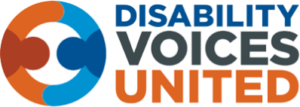Getting Communication Supports through the California Department of Rehabilitation (DOR)
This information was taken from Disability Rights California (DRC) publication #7149.01. It was last updated October 1, 2019. For more information, visit DRC’s Self-Advocacy Publication Hub.
Disclaimer: These materials are based on the law at the time we write them. We try to update our materials; however, laws are regularly changing. If you want to make sure the law has not changed, contact DRC or another legal source.
1. Examples of communication supports
“Communication supports” are devices or services that can help a person with a disability to communicate. For example, Augmentative and Alternative Communication (AAC), Assistive Technology (AT) or “Special Adaptive Equipment,” are devices that can help a person to communicate. In the Department of Rehabilitation (DOR) system, devices that support communication are called “rehabilitation technology,” and includes “assistive technology devices.”
Here are some examples of communication supports:
- JAWs (Job Access with Speech) and other types of screen readers;
- Dynavox and other Speech Generating Devices (SGDs);
- PECs (Picture Exchange Communication System) and other forms of picture-based communication systems;
- Letter boards or alphabet boards;
- Documents in braille or large print;
- Services such as sign language interpreters or communication partners;
- Documents read aloud;
- Documents provided in advance/additional time to review:
- Documents in plain language;
- The use of an interpreter or other support services.
2. Getting communication supports from DOR
DOR can pay for “rehabilitation technology” that is necessary for you to access DOR services and to achieve your employment goal. The DOR can provide you with an evaluation to see whether an assistive technology device would allow you to do certain tasks or help make it easier or safer for you to do certain tasks. Assistive technology services that DOR can provide can include buying, choosing, fitting, and training you (and others as appropriate) on how to use the device. If you are a DOR client and have a disability that requires communication supports to achieve your employment goals, those supports and services should be included in your Individualized Plan for Employment (IPE) as rehabilitation technology.
For more information on the right to effective communication from government programs like DOR, see U.S. Department of Justice, ADA Requirements: Effective Communication, https://www.ada.gov/effective-comm.htm.
3. How to appeal a denial of communication support?
You can ask for an administrative review or for mediation and/or a fair hearing. For more information about DOR Appeals, see California Department of Rehabilitation Appeals Options and Process Fact Sheet, Pub #5530.01
Disability Rights California has prepared this fact sheet as part of the Communication Disabilities Access Network project. The project is intended to develop, train and activate a network of leaders to advocate for communication supports. It is funded by a grant from Ability Central, formerly known as the Disability Communications Fund. Ability Central supports programs and technology that benefit communication and access needs of Californians with disabilities. For more information, visit http://dcfund.us.



